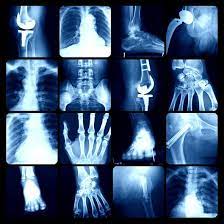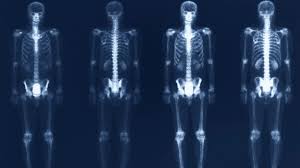
Bone Density Scan Imaging Center also known as a DEXA (Dual-Energy X-Ray Absorptiometry) scan, is a non-invasive medical imaging test used to measure the density and strength of bones. This test is particularly important for individuals at risk of osteoporosis, a disease that weakens bones and makes them more susceptible to fractures.
What Is Bone Density Scan Imaging Center:
Bone Density Scan Imaging Center is performed at a bone density scan imaging center, which typically has specialized equipment and trained staff to perform the test. A bone density scan typically takes between 15 and 30 minutes to complete, and is performed while the patient lies flat on a table.
During the test, a low-dose X-ray is passed through the bones being examined, and the amount of X-rays that are absorbed by the bones is measured. This information is then used to calculate the bone density and strength of the bones.
One of the major benefits of a bone density scan is its accuracy. DEXA scans are considered to be the most accurate method of measuring bone density, and they are able to detect even small changes in bone density over time. This is particularly important for individuals who are at risk of osteoporosis, as early detection and treatment can help to prevent the development of more serious problems in the future.
What We Should Know About The Bone Density Scan Imaging Center:
Another benefit of a bone density scan is that it is non-invasive and safe. Unlike some other imaging tests, DEXA scans do not involve the use of contrast agents or the exposure to harmful ionizing radiation. This makes them a safe and convenient option for individuals of all ages.
Bone density scans are typically recommended for individuals who are at risk of osteoporosis. This includes women who are postmenopausal, individuals who have a family history of osteoporosis, individuals who smoke, and individuals who have a sedentary lifestyle. It is also recommended for individuals who have experienced a fracture after a minor injury, as this can be a sign of osteoporosis.
In addition to being used to diagnose osteoporosis, bone density scans can also be used to monitor the progression of the disease and the effectiveness of treatments. For individuals who have been diagnosed with osteoporosis, regular DEXA scans can help to monitor the progression of the disease and determine if any changes to treatment are necessary.
When interpreting the results of a bone density scan, it is important to understand that the results are compared to a reference population of individuals who are the same age and gender as the patient. The results are then categorized into different T-scores, which indicate the degree of osteoporosis.
Bone Density Scan Imaging Center What’s Play Role In Bon Density:
A T-score of -1 or above is considered to be within the normal range, while a T-score between -1 and -2.5 is considered to be osteopenia, a condition that is associated with an increased risk of osteoporosis. A T-score of -2.5 or below is considered to be osteoporosis.
It is important to note that a bone density scan is just one tool that can be used to diagnose and monitor osteoporosis. Other factors, such as medical history, lifestyle, and medication use, should also be considered when making a diagnosis and determining a course of treatment.
In conclusion, a bone density scan is a safe, non-invasive, and accurate method of measuring the density and strength of bones. It is particularly important for individuals who are at risk of osteoporosis, as early detection and treatment can help to prevent the development of more serious problems in the future. If you are at risk of osteoporosis, it is recommended that you speak with your healthcare provider about having a bone density scan performed
Bone Density Scan Imaging Center How To Get it?
Getting a bone density scan is a relatively straightforward process. Here are the steps to follow:
Consult your healthcare provider: If you are at risk of osteoporosis, or if you have been experiencing symptoms such as fractures after minor injuries, your healthcare provider may recommend that you have a bone density scan performed.
Find a bone density scan imaging center: There are many bone density scan imaging centers located across the country. You can search for one near you by using online directories or by asking your healthcare provider for a referral.
Schedule an appointment: Once you have found a bone density scan imaging center, you will need to schedule an appointment. This can usually be done online or over the phone.
Prepare for the test: Before your appointment, it is recommended that you wear loose, comfortable clothing, as you will need to lie flat on a table for the duration of the test. You may also be asked to remove any jewelry or other metal objects that may interfere with the X-ray.
Arrive for your appointment: On the day of your appointment, arrive at the bone density scan imaging center a few minutes early to allow time for check-in and any necessary preparation.
Complete the test: During the test, you will lie flat on a table while a low-dose X-ray is passed through the bones being examined. The test takes between 15 and 30 minutes to complete.
Receive your results: After the test is completed, your results will be analyzed and sent to your healthcare provider. Your healthcare provider will then be able to provide you with a diagnosis and discuss any necessary treatments or recommendations.

If you want to get amazing benefits by using this link
Radioembolization Y92 Albuqueruqe
Conclusion:
In conclusion, getting a bone density scan is a straightforward process. Simply consult your healthcare provider, find a bone density scan imaging center, schedule an appointment, and complete the test. Your results will then be analyzed and sent to your healthcare provider, who will be able to provide you with a diagnosis and discuss any necessary treatments or recommendations.

